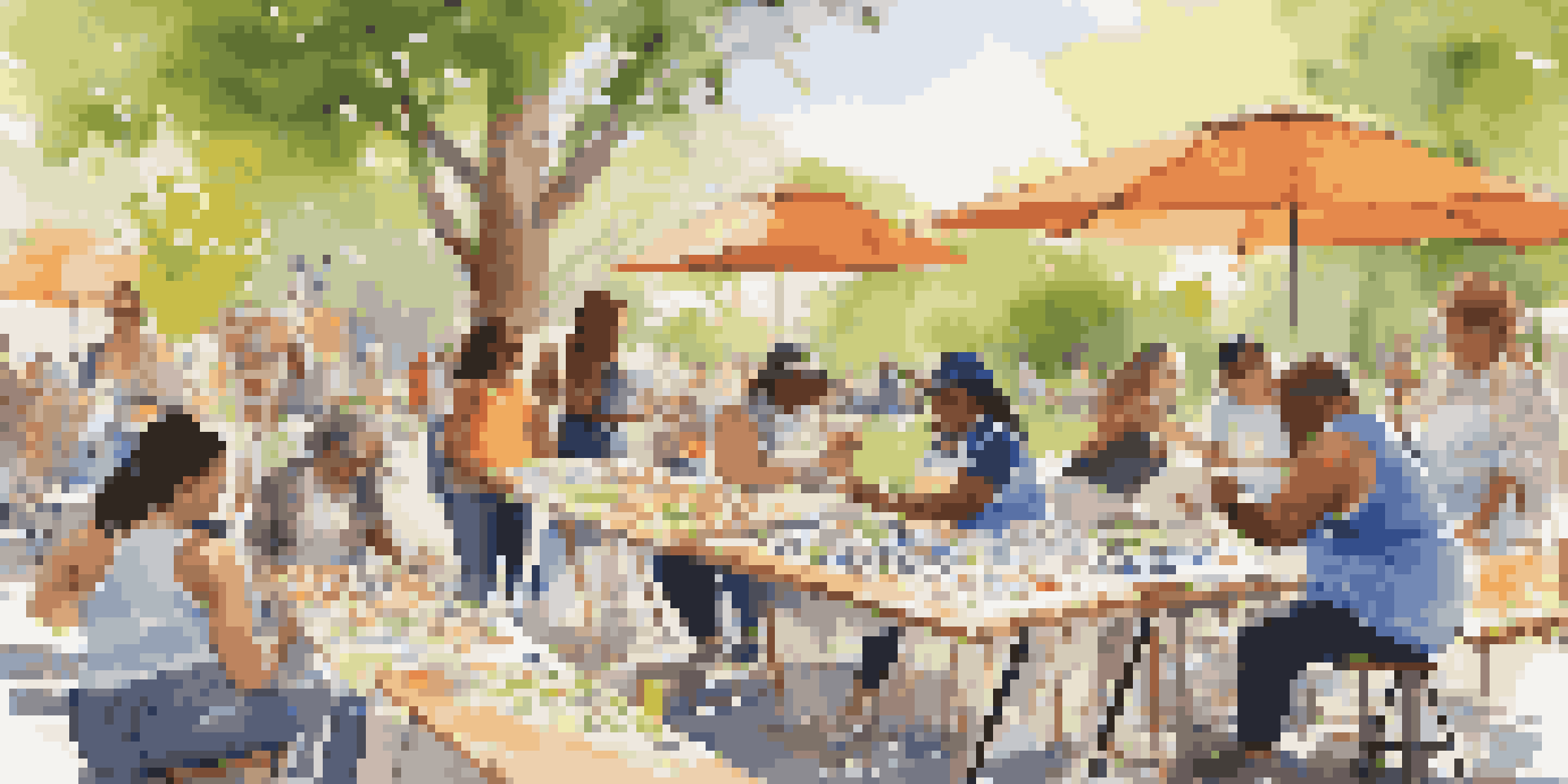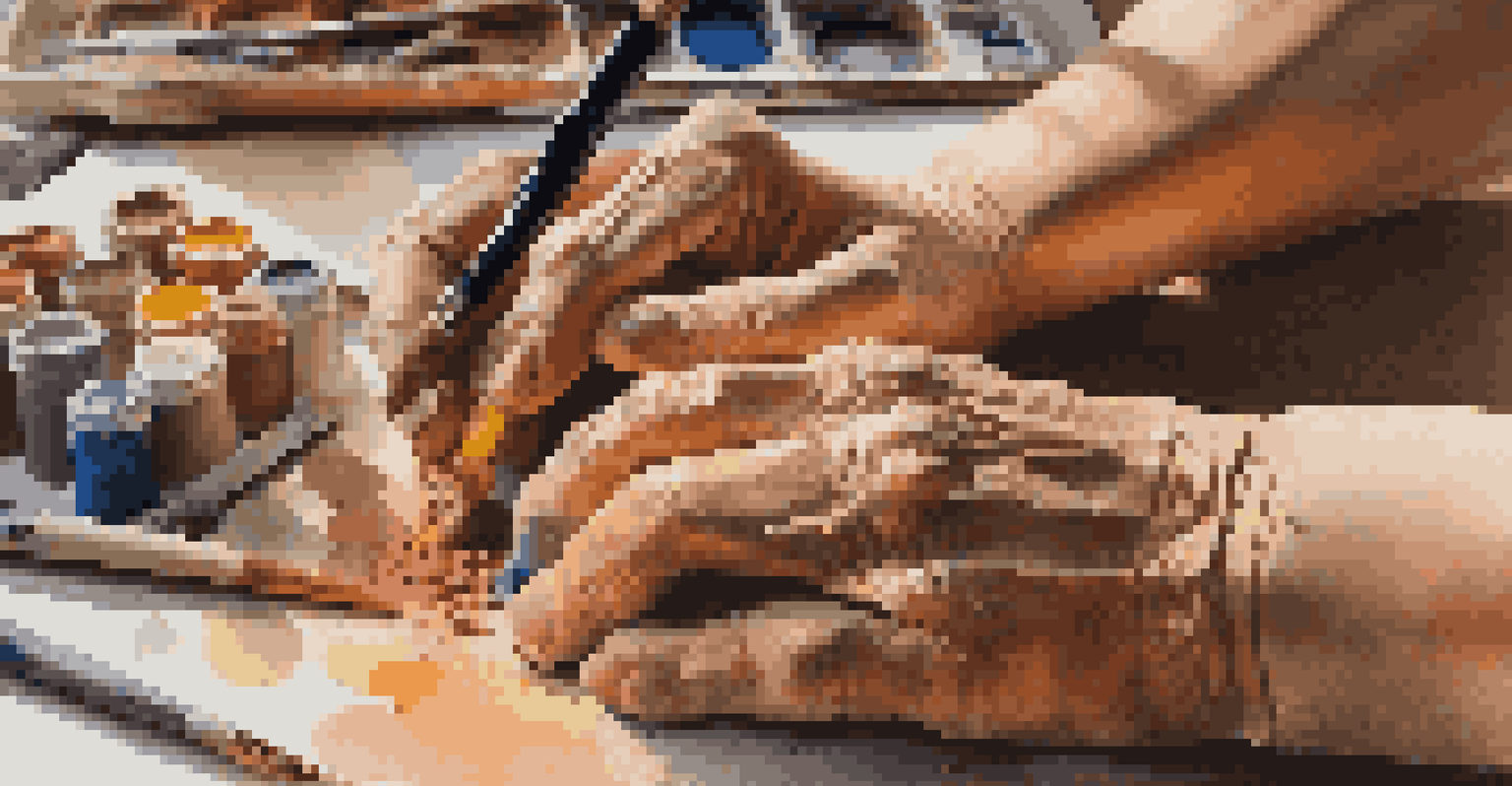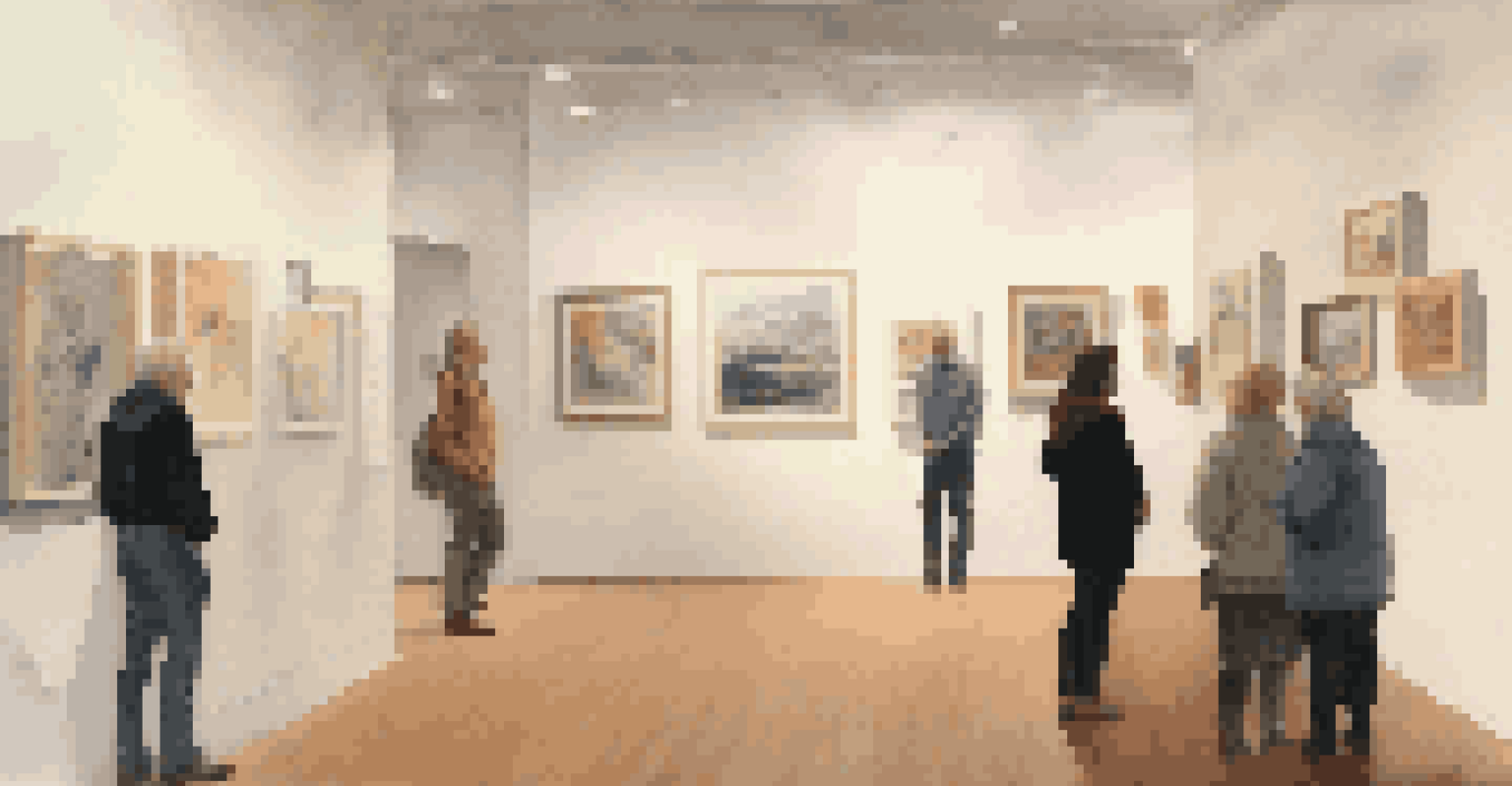Exploring Art's Role in Addressing Mental Health Disparities

Understanding Mental Health Disparities in Society
Mental health disparities refer to the differences in mental health outcomes and access to care among various groups. These disparities often stem from factors like socioeconomic status, race, and geography, creating a complex web of challenges. For instance, marginalized communities may face higher rates of anxiety and depression, yet they often lack adequate resources for support.
Art is the most beautiful of all lies; it is a reflection of the truth that we cannot express in words.
The stigma surrounding mental health further exacerbates these disparities, leading individuals to avoid seeking help entirely. This avoidance can create a cycle of worsening mental health, making it even harder to break free from the constraints imposed by societal expectations and stereotypes. Understanding these disparities is crucial for developing effective strategies to address them.
As we explore solutions, it's essential to consider innovative approaches that resonate with diverse communities. One such approach is the integration of art into mental health care, which can provide a unique pathway to healing and connection.
The Intersection of Art and Mental Health
Art has long been celebrated as a form of expression, but its role in mental health is gaining recognition as a powerful therapeutic tool. Engaging with art—be it through creation or appreciation—can foster emotional expression and provide a safe outlet for feelings that are often difficult to articulate. This can be especially beneficial for individuals from marginalized backgrounds who may feel unheard.

For example, a community art project might allow participants to visually express their struggles with mental health, creating a shared experience that fosters understanding and connection. This communal aspect of art can help reduce feelings of isolation, reinforcing the idea that no one has to suffer alone. It’s a reminder that healing can happen in community spaces, not just clinical settings.
Art as a Mental Health Tool
Integrating art into mental health care fosters emotional expression and community connection, providing a unique pathway to healing.
Moreover, art therapy has been shown to improve mental health outcomes by reducing symptoms of anxiety and depression. By providing individuals with the tools to create, we empower them to take an active role in their healing journey.
Case Studies: Art Initiatives in Mental Health
Numerous organizations have successfully integrated art into mental health initiatives, leading to remarkable outcomes. For instance, a non-profit in New York City created a program where individuals experiencing homelessness could participate in art workshops. Not only did participants develop new skills, but they also formed supportive relationships that contributed to their overall well-being.
The greatest healing therapy is friendship and love.
Another example is a project in London that uses theatre as a medium to address mental health issues among young people. Through storytelling and performance, participants explore their emotions and share their experiences, promoting dialogue about mental health in a way that feels accessible and engaging. This creative approach breaks down barriers and encourages openness.
These case studies illustrate the potential of art to serve as a bridge between individuals and mental health resources. By highlighting diverse voices and experiences, these initiatives foster inclusivity and understanding.
Barriers to Accessing Art-Based Mental Health Solutions
Despite the promising outcomes of integrating art into mental health care, several barriers persist. Access to quality art programs can be limited, particularly in underserved communities where resources are scarce. Additionally, individuals may not be aware of these offerings or may feel intimidated by the idea of participating in artistic activities.
Cost is another significant factor; many art programs may charge fees that are prohibitive for low-income individuals. This highlights the need for funding and support to ensure that everyone has access to therapeutic art experiences, regardless of their financial situation. Without addressing these barriers, the potential of art as a healing tool remains underutilized.
Barriers to Art Access
Access to quality art-based mental health programs is often limited by cost and awareness, particularly in underserved communities.
To truly harness the power of art in mental health, it’s essential to advocate for policies and funding that prioritize accessibility. By creating more inclusive environments, we can ensure that art can be a healing force for everyone.
The Role of Community in Art and Mental Health
Community plays a vital role in the success of art-based mental health initiatives. When individuals come together to create or experience art, they foster a sense of belonging that is crucial for mental well-being. This collective experience can cultivate a supportive network that individuals can rely on during difficult times.
For example, community art shows can bring people together, allowing them to share their stories and experiences through their work. These events can serve as powerful reminders that mental health challenges are shared by many, helping to destigmatize these issues. As attendees connect with one another, they may find inspiration and encouragement in each other's journeys.
Moreover, local artists can become advocates for mental health, using their platforms to raise awareness and promote discussions. By engaging with their communities, they can help ensure that mental health remains a priority.
Future Directions: Art and Mental Health Integration
As we look ahead, the integration of art and mental health care presents exciting possibilities. Technology is opening new doors for creative expression, with virtual reality and digital art offering fresh ways for individuals to engage with their emotions. Innovative platforms can create safe spaces for artistic exploration, regardless of physical location.
Additionally, collaborations between mental health professionals and artists can lead to the development of tailored programs that meet the specific needs of communities. By combining expertise, we can create impactful initiatives that resonate on a deeper level. This cross-disciplinary approach can enhance the effectiveness of both art and therapy.
Community's Role in Healing
Community engagement in art initiatives cultivates a sense of belonging and support, essential for mental well-being.
Ultimately, a future where art is a central component of mental health care could lead to more holistic and inclusive solutions. As we continue to explore these intersections, we have the opportunity to reshape the narrative around mental health and create lasting change.
Conclusion: Embracing Art for Mental Health Equity
In conclusion, exploring art's role in addressing mental health disparities reveals its potential as a transformative force. By fostering emotional expression and community connection, art can bridge gaps that often hinder access to mental health resources. It’s a reminder that healing can take many forms, and creativity is a powerful avenue for change.
As we champion the integration of art in mental health initiatives, we must remain vigilant about the barriers that persist. Advocating for access and inclusivity ensures that all individuals, regardless of their background, can benefit from these creative approaches. It's about making mental health care more equitable and accessible for everyone.

Together, we can create a world where mental health is prioritized, and art serves as a vital tool for healing, understanding, and resilience. By embracing this holistic approach, we can work towards a future where mental health disparities are a thing of the past.